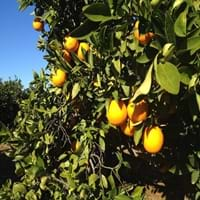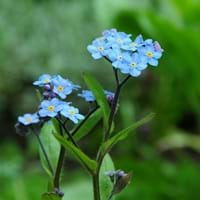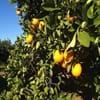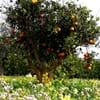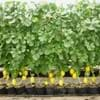Life Span
Annual
Annual and Perennial
Type
Fruit
Flowering Plants, Shrubs
Origin
Southeastern Asia, India, China
Eastern Asia
Types
Not Available
Bigleaf hydrangea, Hortensia, Smooth hydrangea, Oakleaf hydrangea, Annabelle
Number of Varieties
Not Available
Habitat
Farms, Warmer regions
Fields, gardens, meadows, rocky outcrops, waste ground, yards
USDA Hardiness Zone
9-11
Not Available
Sunset Zone
H1, H2, 8, 9, 12, 13, 14, 15, 16, 17, 18, 19, 20, 21, 22, 23, 24
21,22
Habit
Oval or Rounded
Clump-Forming
Flower Color
White, Red, Purple
Blue, White
Flower Color Modifier
Bicolor
Bicolor
Fruit Color
Orange, Orange Red
Not Available
Leaf Color in Spring
Dark Green
Green, Gray Green
Leaf Color in Summer
Dark Green
Green, Gray Green
Leaf Color in Fall
Dark Green
Green, Gray Green
Leaf Color in Winter
Light Green
Light Green
Leaf Shape
Ovate
Lanceolate
Plant Season
Spring, Summer, Fall, Winter
Spring, Summer
Sunlight
Full Sun
Full Sun, Partial Sun
Type of Soil
Loam, Sand
Loam
The pH of Soil
Acidic, Neutral, Alkaline
Acidic, Neutral
Soil Drainage
Well drained
Well drained
Bloom Time
Early Spring, Spring, Late Spring, Late Winter
Early Spring, Spring, Late Spring, Early Summer, Summer, Late Summer
Tolerances
Drought
Not Available
Where to Plant?
Ground
Ground
How to Plant?
Seedlings
Divison, Seedlings
Plant Maintenance
Medium
Medium
Watering Requirements
Do not water frequently, Requires watering in the growing season, Water every two or three days during warmer months
Do Not over Water
In Summer
Lots of watering
Lots of watering
In Spring
Moderate
Moderate
In Winter
Average Water
Average Water
Soil pH
Acidic, Neutral, Alkaline
Acidic, Neutral
Soil Type
Loam, Sand
Loam
Soil Drainage Capacity
Well drained
Well drained
Sun Exposure
Full Sun
Full Sun, Partial Sun
Pruning
Requires little pruning, Shape and thin as needed
Remove damaged leaves, Remove dead branches, Remove dead leaves
Fertilizers
Acidic Fertilizer
All-Purpose Liquid Fertilizer
Pests and Diseases
Aphids, Scale, Whiteflies
Red blotch
Plant Tolerance
Drought
Drought
Flower Petal Number
Single
Single
Fragrant Bark/Stem
Yes
No
Foliage Texture
Medium
Medium
Foliage Sheen
Glossy
Matte
Attracts
Birds, Butterflies
Bees, Flies
Allergy
no allergic reactions
Chest tightness, Diarrhea, Dizziness, Nausea, Vomiting
Aesthetic Uses
Not Used For Aesthetic Purpose
Beautification, Cottage Garden, Ground Cover, Showy Purposes
Beauty Benefits
Not Available
Not Available
Environmental Uses
Air purification
Air purification
Medicinal Uses
Not Available
Fever, Kidney problems, Urinary tract problems
Part of Plant Used
Fruits
Flowers, Root
Other Uses
Cosmetics, Culinary use
Culinary use, Used as Ornamental plant
Used As Indoor Plant
No
No
Used As Outdoor Plant
Yes
Yes
Garden Design
Container, Edible, Feature Plant, Fruit / Fruit Tree, Hedges, Mixed Border, Screening / Wind Break, Topiary / Bonsai / Espalier, Tropical
Bedding Plant, Cottage garden, Edible, Hanging Basket, Wildflower
Botanical Name
CITRUS sinensis 'Valencia'
Myosotis arvensis
Common Name
Orange, Valencia Orange
Forget-Me-Not
In Hindi
वालेंसिया ऑरेंज
Forget-Me-Not
In German
Valencia-orange
Forget-Me-Not
In French
orange de Valence
Forget-Me-Not
In Spanish
Naranja Valencia
Arce japonés
In Greek
Valencia Orange
Forget-Me-Not
In Portuguese
Valencia Laranja
Forget-Me-Not
In Polish
Valencia Pomarańczowy
Forget-Me-Not
In Latin
Aliquam Valencia
Forget-Me-Not
Phylum
Tracheophyta
Magnoliophyta
Class
Magnoliopsida
Magnoliopsida
Order
Sapindales
Lamiales
Family
Rutaceae
Boraginaceae
Clade
Angiosperms, Eudicots, Rosids
Not Available
Tribe
Citreae
Not Available
Subfamily
Aurantioideae
Not Available
Number of Species
Not Available
Season and Care of Valencia Orange and Field Forget Me Not
Season and care of Valencia Orange and Field Forget Me Not is important to know. While considering everything about Valencia Orange and Field Forget Me Not Care, growing season is an essential factor. Valencia Orange season is Spring, Summer, Fall and Winter and Field Forget Me Not season is Spring, Summer, Fall and Winter. The type of soil for Valencia Orange is Loam, Sand and for Field Forget Me Not is Loam while the PH of soil for Valencia Orange is Acidic, Neutral, Alkaline and for Field Forget Me Not is Acidic, Neutral.
Valencia Orange and Field Forget Me Not Physical Information
Valencia Orange and Field Forget Me Not physical information is very important for comparison. Valencia Orange height is 460.00 cm and width 300.00 cm whereas Field Forget Me Not height is 25.00 cm and width 25.40 cm. The color specification of Valencia Orange and Field Forget Me Not are as follows:
Valencia Orange flower color: White, Red and Purple
Valencia Orange leaf color: Dark Green
Field Forget Me Not flower color: Blue and White
- Field Forget Me Not leaf color: Green and Gray Green
Care of Valencia Orange and Field Forget Me Not
Care of Valencia Orange and Field Forget Me Not include pruning, fertilizers, watering etc. Valencia Orange pruning is done Requires little pruning and Shape and thin as needed and Field Forget Me Not pruning is done Remove damaged leaves, Remove dead branches and Remove dead leaves. In summer Valencia Orange needs Lots of watering and in winter, it needs Average Water. Whereas, in summer Field Forget Me Not needs Lots of watering and in winter, it needs Average Water.
